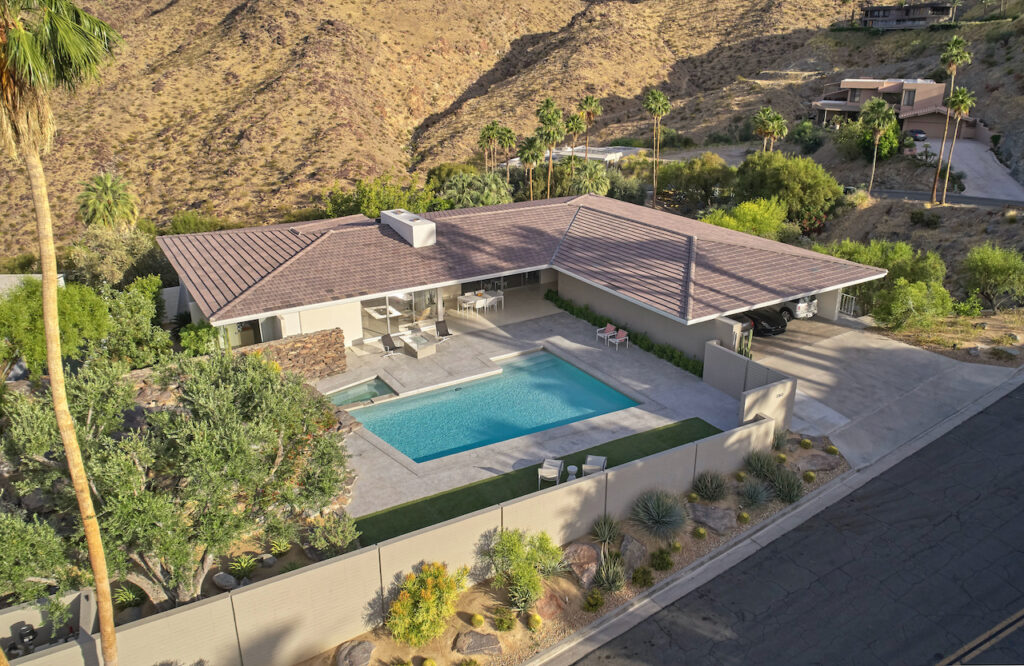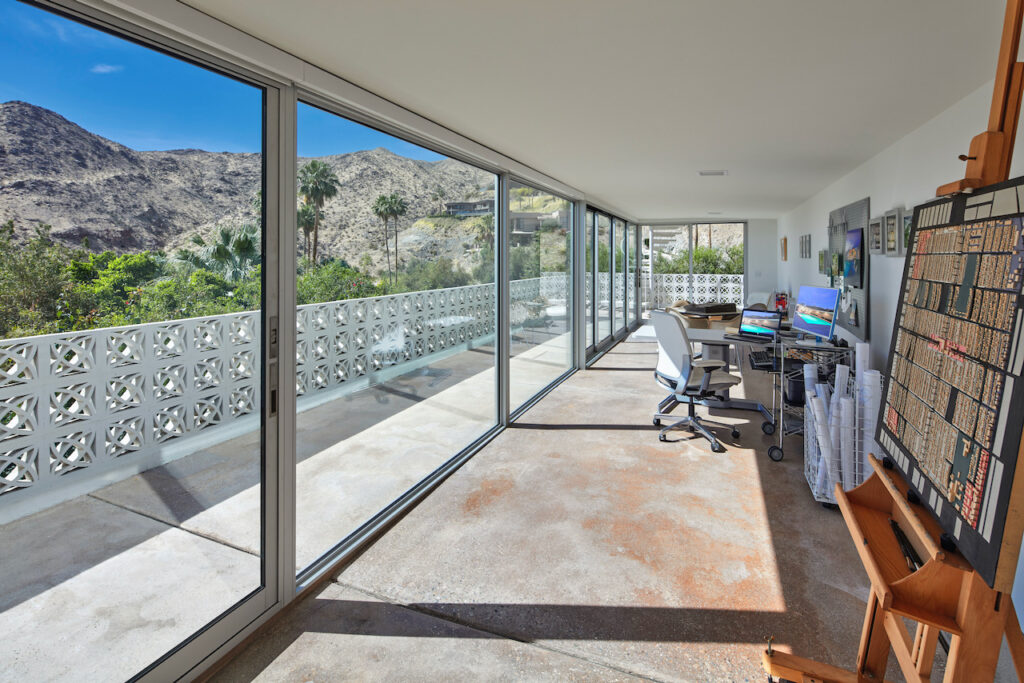
Southridge is one of the most exclusive and historic estates in Palm Springs, and its development began in the early 1960’s.
The site overlooks the stunning Coachella Valley and was the inspiration for the architect John Lautner to design the iconic Bob Hope and Arthur Elrod houses. Movie stars Steve McQueen and William Holden also lived in the community.
We take a look at one of the earliest homes to be built in Southridge – a California ranch style home freshly updated.
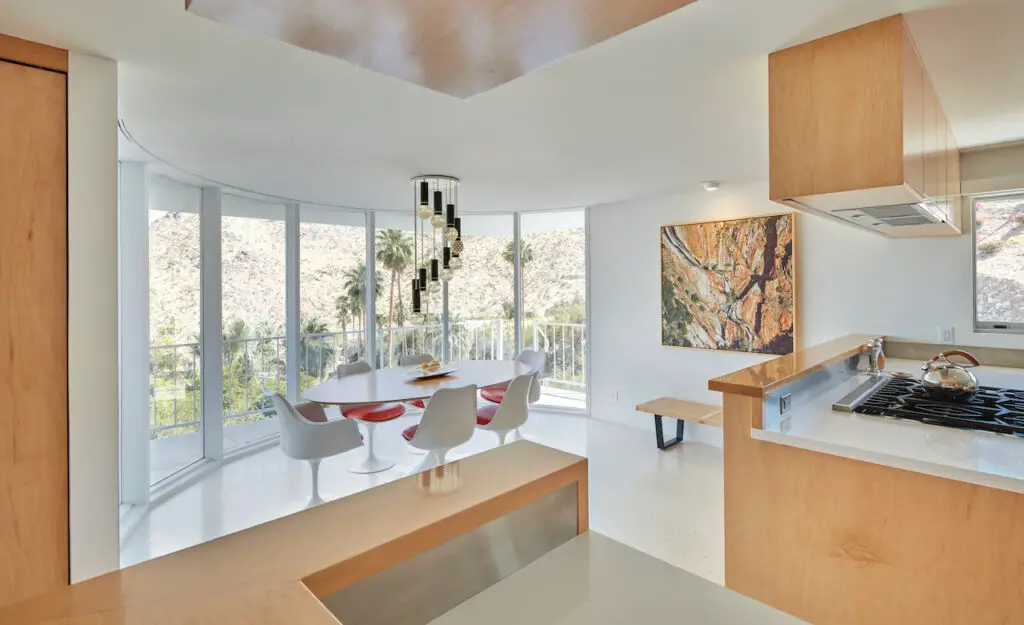
The house was completed gutted internally and the floor plan reworked. A clumsy lower-level addition that detracted from the home’s outlook was removed, returning the property to its minimal design.
True to midcentury design, the home connects to the exterior, creating a seamless blend of the interior and exterior.
The home previous had a more Beverly Hills than Palm Springs vibe, so marble was removed in favor of poured terrazzo. A once enclosed kitchen is now opened up to sweeping views of the desert.
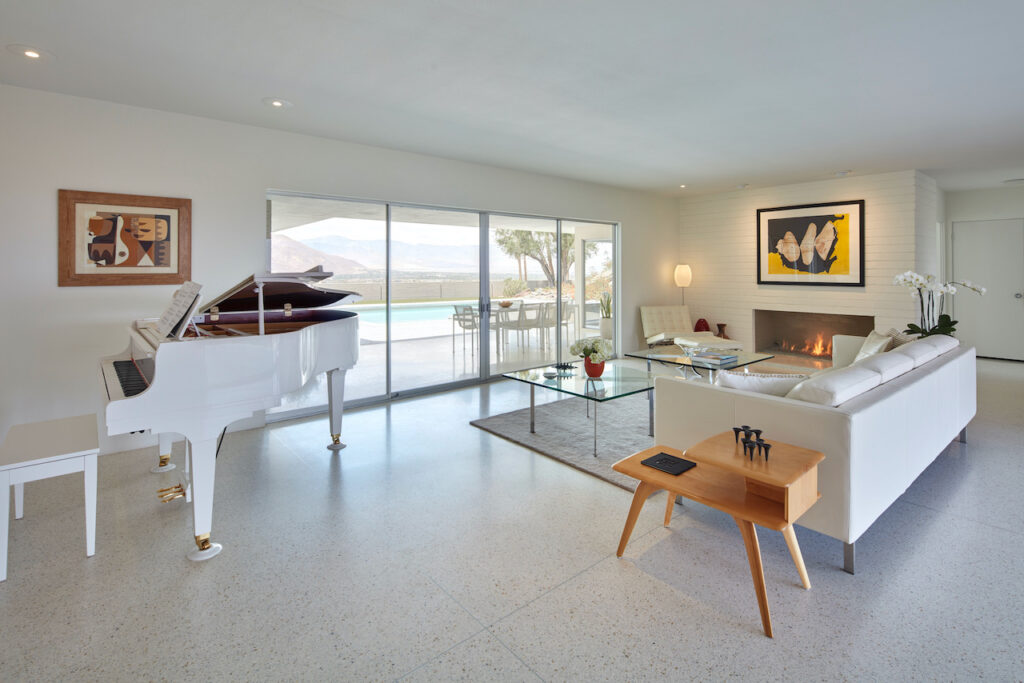
The bathrooms include original vintage tile and were updated with next fittings and fixtures. The neutral palette of the home allows the stunning furniture pieces by Eames, Saarinen and Miles van der Rohe to shine.
We chatted with Susan Secoy Jensen of Secoy Architects, to learn more about the work undertaken to restore the home and her thoughts on midcentury design.
Do you have any details on the client brief?
“Southridge House is owned by myself and my husband, Dan Jensen. The Southridge House is our part-time residence. We live and work in both the city of Orange and Palm Springs. It is approximately a 1.5 hour drive between Orange and Palm Springs.”
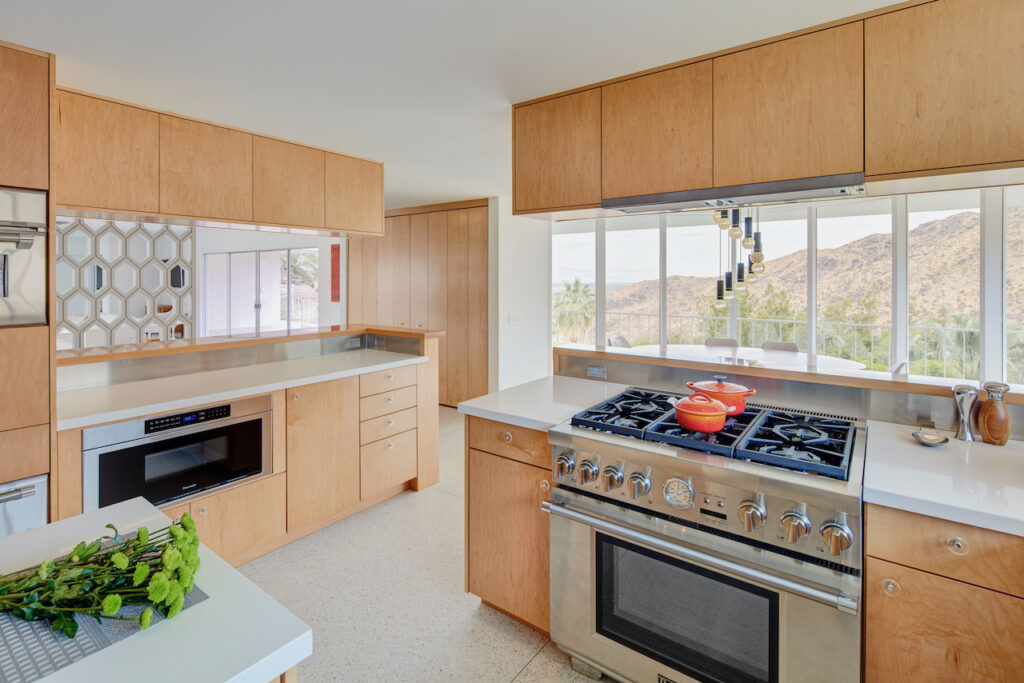
What mid century influences did you want to include?
“The Southridge House is more of a California ranch style, similar to Cliff May’s designs. It was the second house in the Southridge development to be built. It was designed by Patten & Wild in 1962, and is nestled harmoniously within the natural landscape.”
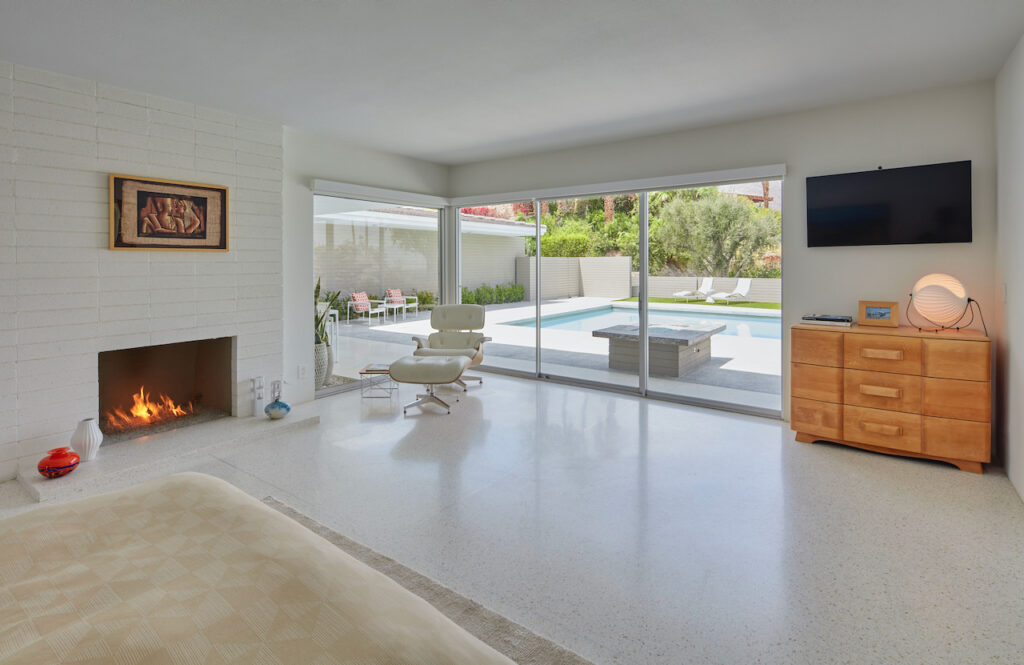
What were your challenges for this project?
“The house had so many insensitive additions and finishes that needed to be removed. A room was removed on both levels of the house, thus capturing beautiful exterior space as opposed to interior square footage. The removal of spaces and materials were a challenge, as was pouring terrazzo flooring throughout the house.”
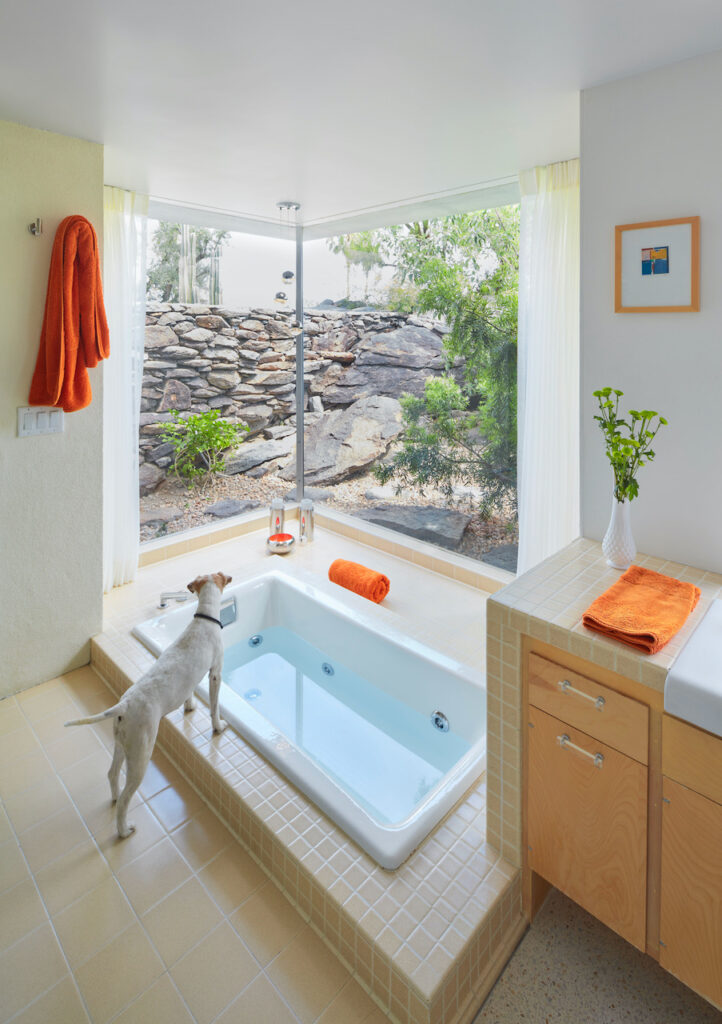
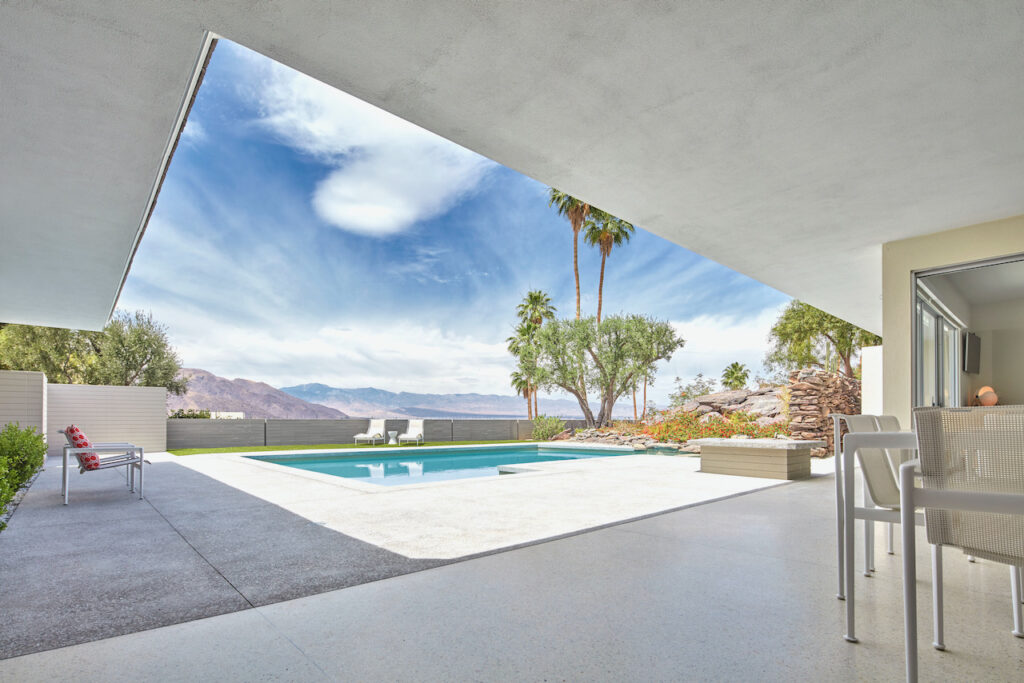
What in your opinion are the best features of the home?
“The views and natural landscape. The transparency of the main living spaces. Terrazzo floors that flow throughout the entire house. The attached, yet separate studio space on the lower level, with slide away doors and the feeling of being outside, yet sheltered. Privacy, yet proximity to conveniences in the heart of Palm Springs.”
What do you think was so special about the midcentury modern period in American design?
“The innovation, and fresh ways of problem solving, post war. Modernism reflected a new way of life. The architecture focuses on geometry which includes flat planes and large panes of glass and transparency, which blur the boundaries between the interior and exterior allowing integration with nature. Because of the transparency, small spaces seem larger.
Many midcentury modern homes could be built efficiently, often utilizing a post and beam structure, flat roofs, walls of glass and modern appliances. Often the structure is exposed, and becomes a part of the aesthetic of the home.”
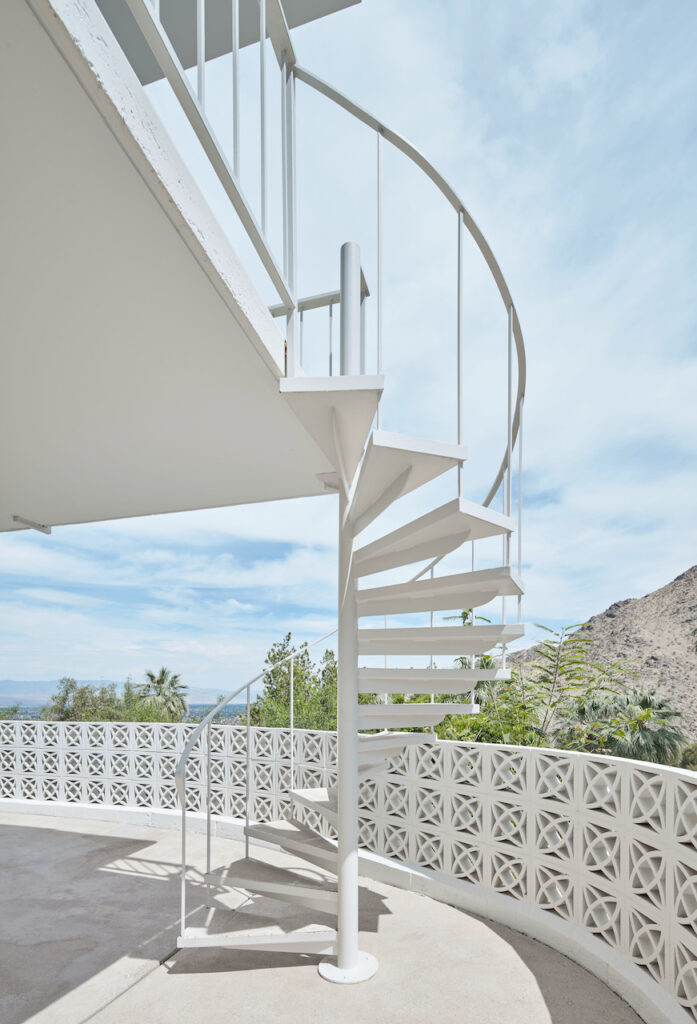
Last but not least, do you have any tips for people interested in buying a midcentury house today? What should they pay attention to and why?
“Be mindful of the context of the home. What is the soul of the property? Mountains, water, trees? The house should harmonize with nature, and celebrate the connection between the inside and outside. The best design goes unnoticed. Less is more.”
